

Using the cutter safely and correctly will reduce injuries and improve work efficiency.
It will also lead to a better finished product.
English


Using the cutter safely and correctly will reduce injuries and improve work efficiency.
It will also lead to a better finished product.
Featured Contents
This section provides basic information on how to use OLFA cutters.
To ensure safe and proper use, please note the following points.
For detailed instructions on how to use each product, please refer to the detailed page of each product.
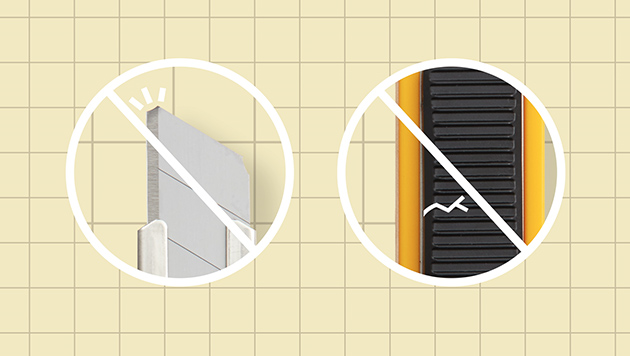
1Check your cutter before use
Before using a cutter, check it to see if its blade is worn or the handle is broken. Using broken cutters can be very dangerous.
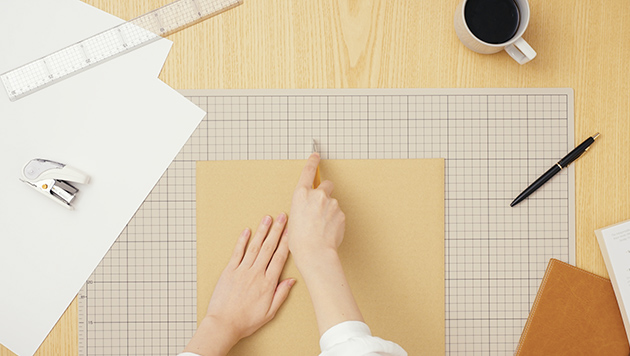
2Tidy up the work area
Using a cutter in a cluttered area may cause injury. Please make it a habit to always keep your work area tidy.
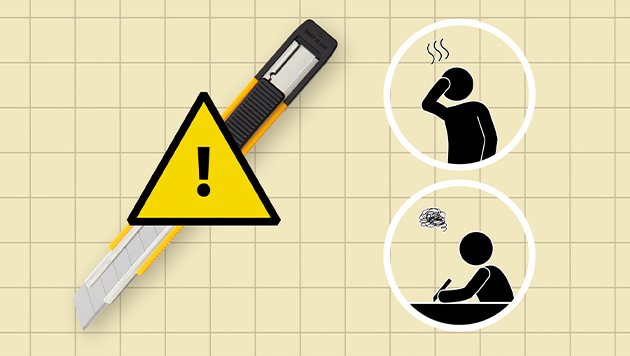
3Be in perfect condition
Please avoid using cutting tools if you are not feeling well, or not able to concentrate.
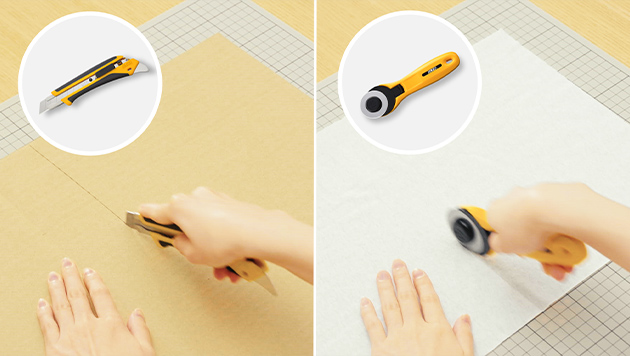
4Pick up a cutter suitable for the material to cut
Use a cutter suitable for the object to cut, such as a heavy-duty cutter for thick, hard cardboard, and a rotary cutter for soft cloth.
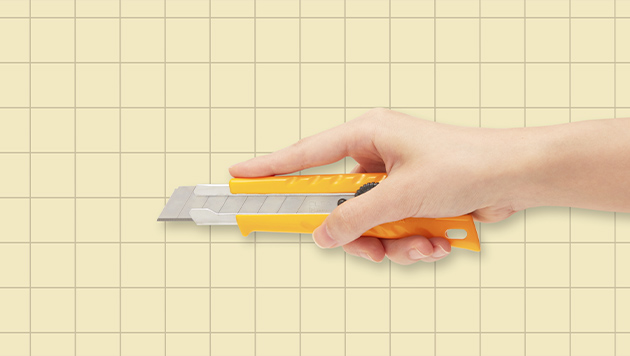
5Choose a cutter suitable for your handedness
To ensure work efficiency and safety, use a cutter that fits your dominant hand. If you are left-handed, pick up an ambidextrous model.
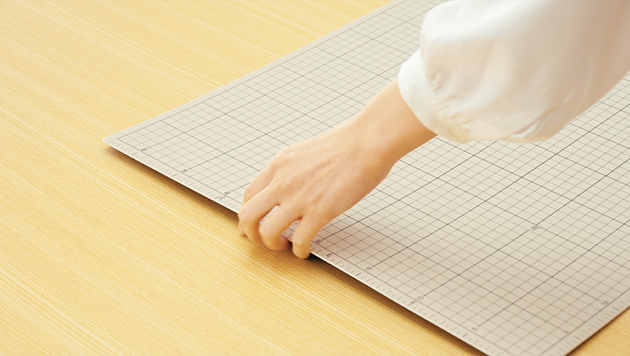
6Cut with an OLFA cutting mat
Without a cutting mat, blade may damage the working surface. Using a mat extends the life of blades while protecting the surface underneath.
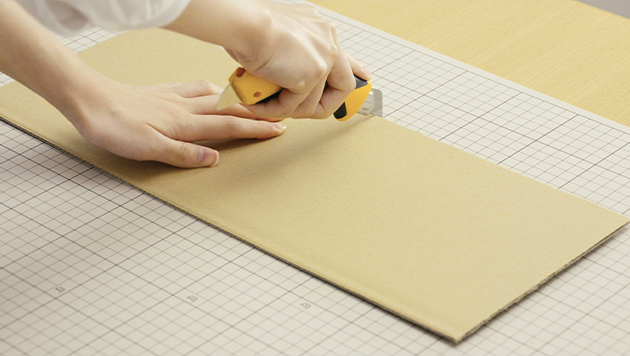
7Work on a stable, flat surface
Working in an unstable condition, such as on a slumped desk, may cause injury or other accidents.
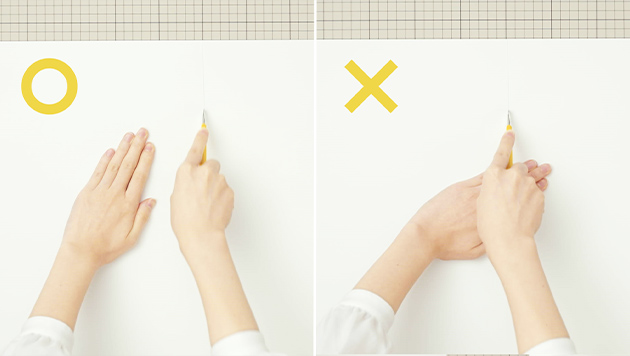
8Hand position awareness
Pay attention to the position of your hand that holds the object to cut. Putting your hand in the way of the blade is very dangerous.
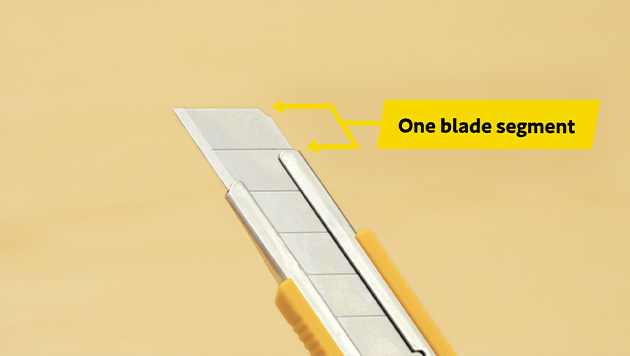
9Do not expose the blade more than necessary
The suggested exposure when cutting is one blade segment. There is a risk of unintentional blade snapping if it is exposed in excess, which could lead to injuries.
* Exposure length suggestion is only applicable for snap-off blade cutters.
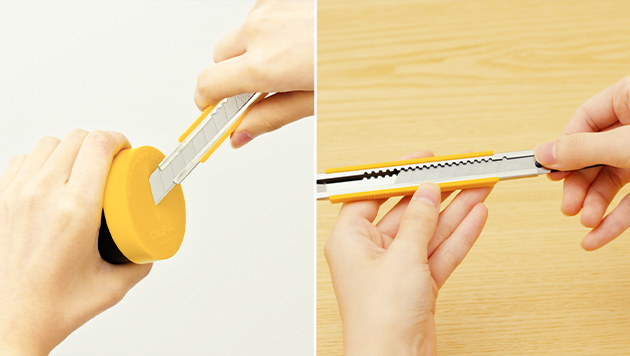
10Use sharp blades for the highest safety
Using a dull blade requires extra force, which is a cause of injury. If you find it difficult to cut, snap-off the blade for a new edge or replace with a new blade.
* Only snap-off blades can be snapped.
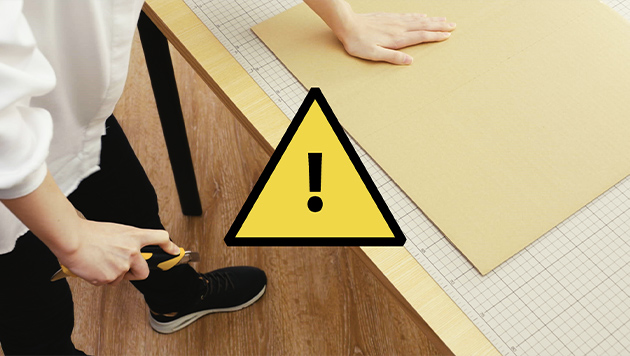
11Do not use excess force when cutting
There is a higher risk of injury when a greater amount of force is used.
* If a great amount of force is required, the blade may be dull, or the material may not be suitable for cutting with the applied tool.
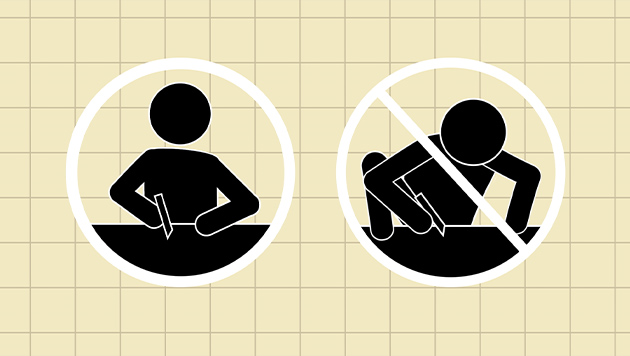
12Use in a steady position
Working in an unstable position can be very dangerous due to excessive force applied to the work. Make sure to work in a steady and stable position.
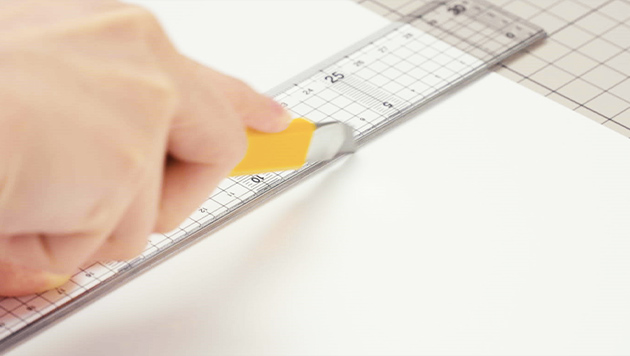
13Use the spine of a thick ruler
When cutting with a ruler, choose a thick one and apply blade to its spine. Cutting with a thin or sloped side may cause cutter to ride up and injure you.
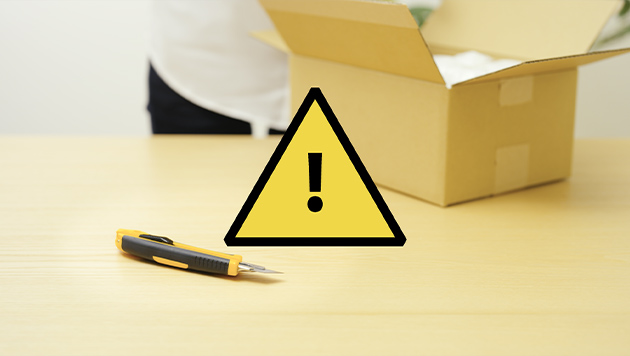
14Do not leave blade exposed
It is dangerous to leave the blade exposed after cutting. Make sure to retract blade fully when not in use.
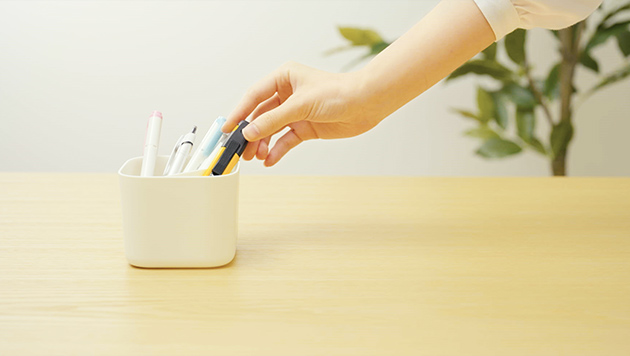
15Put away cutting tools after use
When work is done, do not leave cutters unattended but put them away. It is safe to store them in a designated place every time.
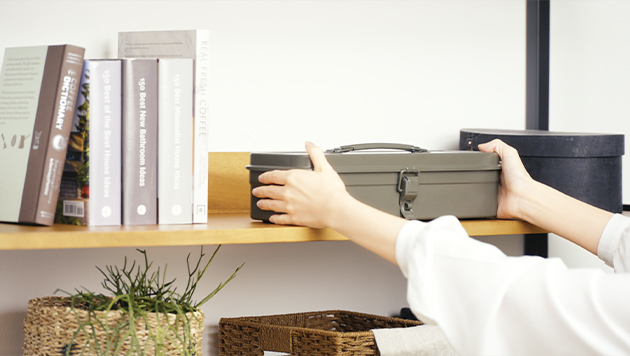
16Keep cutters in a safe place
When cutters are not in use, store them in a safe place. Keep them away from the reach of children.
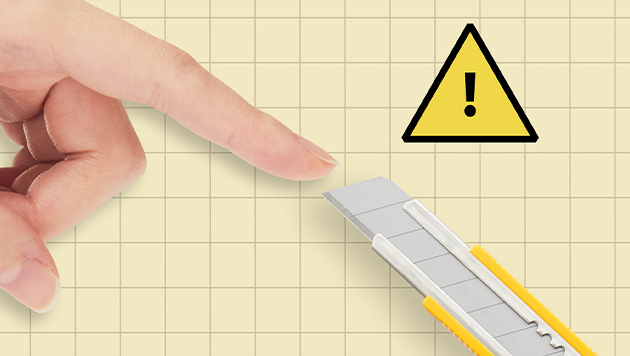
17Be careful not to touch the blade
Blade is extremely sharp. Please be careful not to accidentally touch the blade.
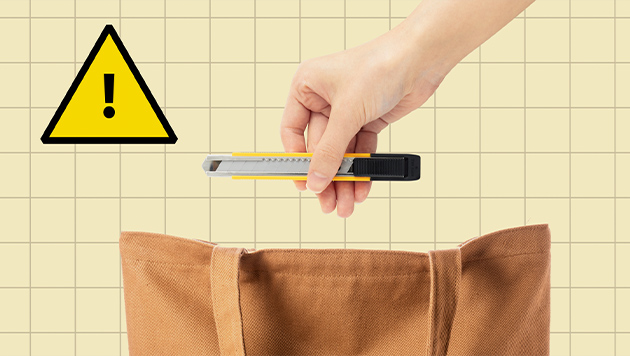
18Do not carry cutters around if not necessary
Bearing edged tools without a valid reason may be prohibited by law. Please check with your local authorities.
We provide videos for guidance in workplaces and at schools.
Click here to contact us for more information.